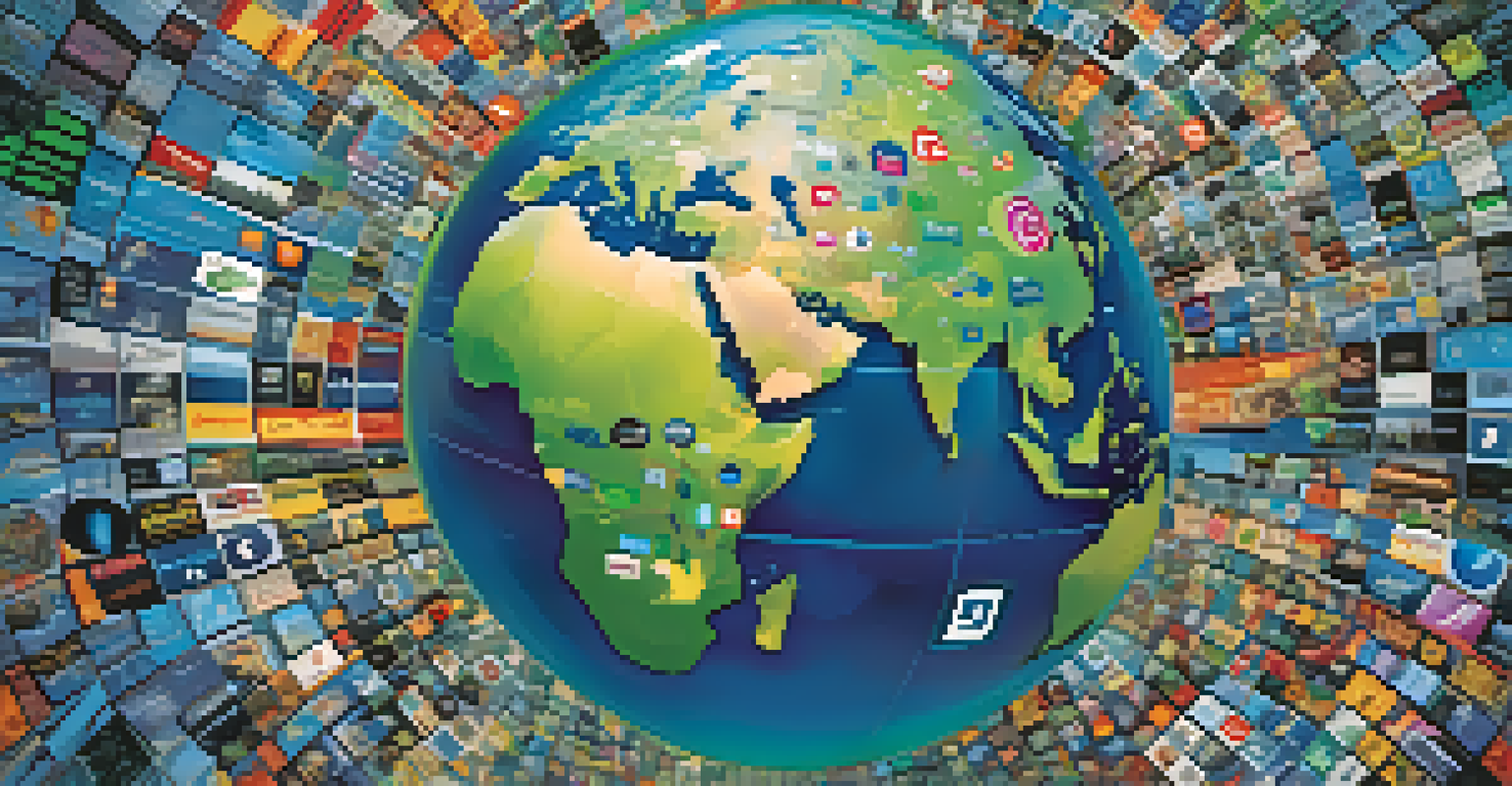The Rise of Streaming Services: Hollywood's New Frontier

Streaming Services: A Game Changer for Entertainment
The emergence of streaming services has transformed how we consume media. Gone are the days when we had to wait for weekly episodes or schedule time to catch a movie on TV. Now, platforms like Netflix and Disney+ offer entire seasons at our fingertips, allowing for binge-watching marathons that cater to our modern lifestyles.
Streaming services have fundamentally changed the way we consume content, making it more accessible and personalized than ever before.
This shift has not only changed viewing habits but also the industry itself. Traditional networks are adapting by launching their own streaming platforms, realizing that the future lies in on-demand content. As audiences increasingly gravitate towards convenience, the pressure is on for studios to innovate and meet these new expectations.
Moreover, the rise of streaming has given a voice to diverse creators and storytellers. Independent films and niche genres that once struggled to find a market are now thriving online, showcasing a broader range of perspectives and experiences. This democratization of content is reshaping the narrative landscape in Hollywood.
The Impact of COVID-19 on Streaming Growth
The COVID-19 pandemic acted as a catalyst for the growth of streaming services. With theaters closed and people stuck at home, many turned to platforms like Hulu and Amazon Prime for entertainment. This surge in viewership brought in millions of new subscribers, leading to record-breaking growth during a time when the industry was facing unprecedented challenges.

As a result, studios began to rethink their release strategies. Major films that would typically debut in theaters were instead released directly on streaming platforms. This shift sparked conversations about the future of cinema and whether traditional movie-going experiences would ever return to their former glory.
Streaming Services Transform Media
The rise of streaming platforms like Netflix and Disney+ has revolutionized how audiences consume entertainment, offering on-demand access to a vast array of content.
Ultimately, the pandemic highlighted the flexibility and resilience of the streaming model. While it may have been born out of necessity, it has proven to be a viable alternative that can coexist with traditional film and television, offering audiences more choices than ever before.
The Competition Among Streaming Giants
As the popularity of streaming services has soared, so has the competition among major players. Each platform is vying for subscribers and trying to carve out its niche in a crowded market. Companies like HBO Max and Apple TV+ are investing heavily in original content to attract viewers and stand out from the crowd.
The future of entertainment will not just be about watching, but about participating in the narrative.
This competition is not just about quantity but also quality. The pressure to produce compelling shows and movies has led to some incredible storytelling that captivates audiences. For instance, series like 'The Mandalorian' and 'The Queen's Gambit' have become cultural phenomena, drawing in new viewers and keeping them engaged.
However, this fierce competition also raises questions about sustainability. As budgets escalate and content creation becomes more costly, it's unclear how long this arms race can last. Will platforms be able to maintain subscriber growth while managing their expenditures, or will we see a shakeout in the industry?
Changing Viewer Habits and Preferences
Streaming has fundamentally altered viewer habits, shifting our expectations of what entertainment should be. With the ability to watch anything, anytime, and anywhere, audiences are embracing a more personalized approach to media consumption. This flexibility allows viewers to curate their own experiences, leading to a more engaged and loyal fan base.
Moreover, the rise of mobile viewing has added another layer to this transformation. With smartphones and tablets, people can now watch their favorite shows during commutes, lunch breaks, or even while traveling. This on-the-go access has made streaming an integral part of daily life, further solidifying its place in the entertainment landscape.
COVID-19 Accelerated Streaming Growth
The pandemic significantly boosted streaming service subscriptions as people turned to these platforms for entertainment while theaters were closed.
As viewer preferences evolve, so too must the content offered by streaming services. Platforms are increasingly focusing on targeted programming that resonates with specific demographics. From reality shows to international films, the diversity of content available caters to the varied tastes of global audiences.
The Role of Original Content in Success
Original content has emerged as a cornerstone of success for streaming services, attracting subscribers and retaining their loyalty. By producing exclusive films and series, platforms can differentiate themselves in a competitive market. For example, Netflix's investment in original programming like 'Stranger Things' has significantly bolstered its subscriber base.
This focus on originality not only appeals to viewers but also fosters brand identity. Each streaming service is building a unique library that reflects its values and vision, from family-friendly fare to edgy dramas. This curated approach allows platforms to connect more deeply with their audiences and create memorable experiences.
Additionally, original content enables streaming services to take creative risks that traditional studios may shy away from. This freedom to experiment has led to innovative storytelling and groundbreaking concepts that resonate with viewers. As a result, the conversation around what constitutes quality entertainment is evolving, making way for a new generation of storytellers.
The Global Reach of Streaming Services
Streaming services have a unique ability to transcend geographical boundaries, bringing global content to local audiences. With just a click, viewers can access films and series from around the world, enriching their viewing experience with diverse stories and perspectives. This accessibility is reshaping the cultural landscape and fostering a greater understanding of different societies.
Moreover, many platforms are investing in local content production to cater to specific markets. For instance, Netflix has produced original series in various languages, appealing to audiences in countries like India and South Korea. This strategy not only boosts subscriptions but also strengthens the brand's presence in diverse cultures.
Original Content Drives Success
Investing in original programming has become essential for streaming services to attract and retain subscribers in a competitive market.
The global reach of streaming services also encourages cross-cultural collaborations, leading to exciting partnerships between creators from different countries. As these collaborations flourish, audiences can look forward to unique storytelling that blends cultural influences, ultimately enhancing the richness of global entertainment.
The Future of Streaming: Trends and Predictions
As the streaming landscape continues to evolve, several trends are shaping the future of this industry. One key trend is the increasing emphasis on interactive content, where viewers can influence the storyline, as seen in projects like 'Bandersnatch.' This innovative approach not only engages audiences but also opens new avenues for storytelling.
Another important trend is the integration of augmented reality (AR) and virtual reality (VR) into the viewing experience. As technology advances, streaming services may explore immersive storytelling that allows viewers to feel like they are part of the action. This could revolutionize how we experience films and series, creating a more dynamic relationship between viewers and content.

Lastly, the conversation around subscription fatigue is becoming more prominent. With so many platforms available, audiences may find themselves overwhelmed by choices and costs. The future may see a shift towards bundling services or creating hybrid models that combine streaming with traditional cable offerings, catering to the diverse preferences of consumers.